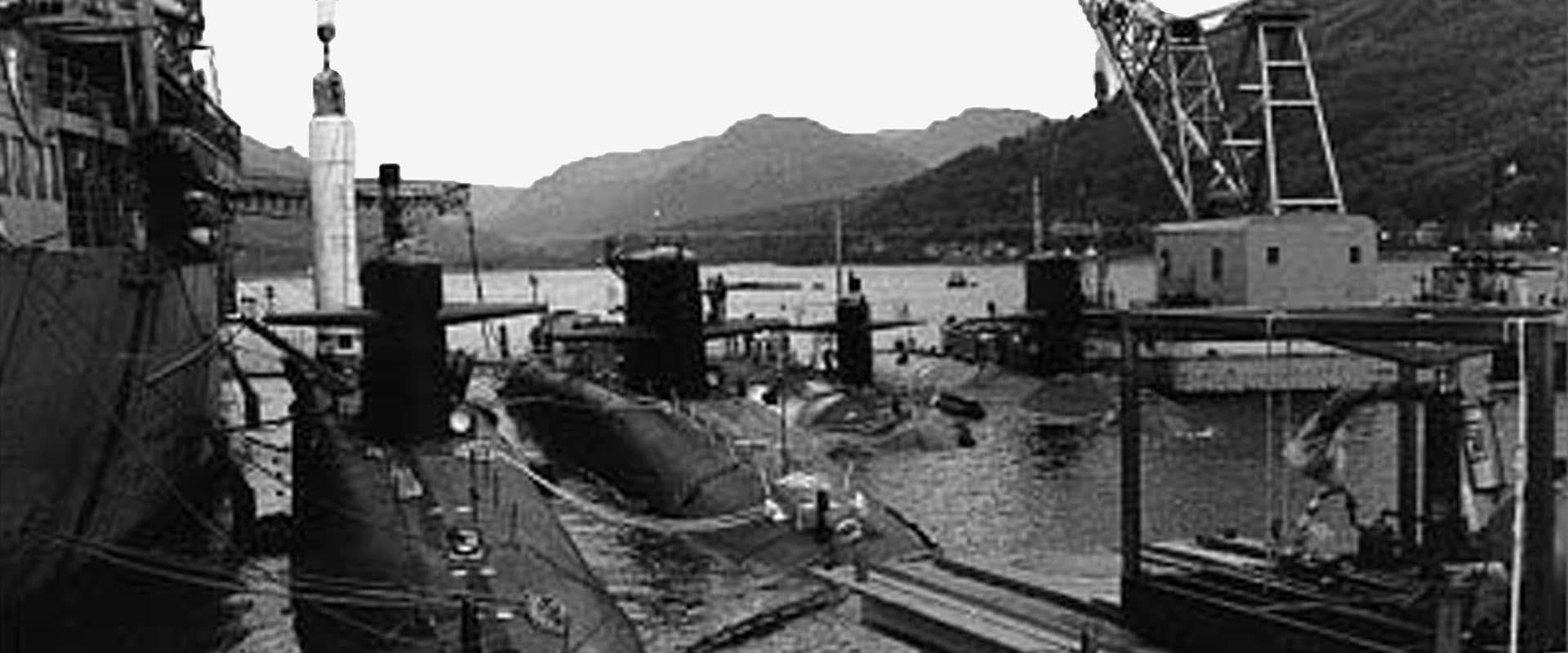My military service covered a total of 4 years of active duty in the U.S. Navy and 2 years of inactive reserve. Duty stations I was assigned to during this time included Great Lakes IL, San Diego CA, Groton CT and Charleston SC. The majority of my service time was spent aboard the nuclear powered submarine U.S.S. Von Steuben SSBN 632. The crew was home-ported in Charleston but deployed to and from patrols out of the U.S. naval base in Holy Loch, Scotland.

MILITARY SERVICE

“No one has done more to prevent conflict – no one has made a greater sacrifice for the cause for peace than you, America’s proud missile submarine family. You stand tall among our heroes of the Cold War.”
— Colin Powell

THE SUBMARINE EXPERIENCE
With a total of almost a year’s time spent submerged in close quarters with shipmates, the one thing I learned to do very well was get along with all types of people and personalities. That experience has helped me greatly throughout my career developing successful working relationships with both co-workers and supervisors alike.
- Qualified U.S. Navy Submariner
- Achieved Second Class Petty Officer Status (E5) – RM2(SS)
- Radio Communications Supervisor
- Completed 5 Deterrent Submarine Patrols
- Spent 350+ Days Underwater
USS Von Steuben Statistics
Officers
Enlisted Men
Ballistic Missile Tubes
Torpedo Tubes
Length (ft)
Beam (ft)
Draft (ft)
Days of Patrol
Submarine FAQ's
Life on board a Navy nuclear submarine and how they are used in national defense is kept in relative secrecy. Throughout the Cold War, nuclear powered submarines played a strategic part of the nuclear triad of land-launched nuclear missiles, nuclear missile armed submarines and strategic aircraft equipped with nuclear missiles and bombs. Here are the answers to some common questions about submarines, with much of this information courtesy of the United States Navy Submarine Force.
How Deep Can a Submarine Go?
That information is classified. What the Navy can tell you is that their nuclear-powered submarines can submerge deeper than 800 feet.
How Long Can a Submarine Stay Underwater?
The Navy's nuclear-powered submarines can stay submerged for long periods of time. Air isn't a problem as they make their own oxygen and keep the air clean. The limits on how long they can stay underwater are the amount of food and supplies they carry.
Can You See Out of a Submarine?
No, Navy submarines don't have windows or portholes so the crew can watch undersea life. Submarines have only periscopes for outside vision, and those are only used close to the surface at periscope depth. Submariners can look around 360 degrees with the periscope to find other ships and aircraft in the area and to gain information on a target they plan to attack or shipping to avoid.
How Do Submarines Communicate?
Submarines use specialized equipment to communicate with shore bases and ships, either directly or through a satellite. Submarines can send and receive both voice and non-voice information. Submariners can send and receive email while in port and under limited conditions while at sea. They can also use Very Low Frequency (VLF) radio that actually travels underwater to depths of 60 ft at 3-30 kHz.
What does it mean to be a qualified submariner?
Although submarine qualification methodology has changed throughout the decades, the basic goal has remained: 1) to provide the submarine sailor with a basic knowledge of all systems on board, their uses, operations, and interrelationships with other systems and 2) to ensure all personnel can operate effectively under pressure in shipboard situations. Submarine damage control techniques are stressed throughout the qualification process. The principal focus is on the actual operation of the damage control, atmosphere control, weapons, countermeasures, reactor, mechanical, hydraulic, pneumatic, water, electrical, and electronic systems on that particular submarine.
How Fast Can a Submarine Go?
That is classified as well. However, submarines can go faster than 23 miles per hour or 20 knots (nautical miles per hour) underwater.
How Do Submarines Get Air?
A submarine has access hatches to bring in outside air when in port, and a snorkel mast to bring in air while submerged at periscope depth. Once submerged below periscope depth, equipment continuously cleans the air of contaminants. Oxygen-generating equipment is used to further replenish the air and the quality of air is continuously monitored.
How Do Submarines Know Where To Go Underwater?
Navigation is set by the submarine Navigators and Quartermasters and guided by computers on the ship. They also use ocean navigational charts. The ship receives signals from Global Positioning System (GPS) satellites when near enough to the surface to use an antenna.
How Does a Submarine Surface?
One way a submarine can surface is called blowing to the surface. To do this, high-pressure air is blown into the ballast tanks to replace the seawater. It's the weight of the seawater that is keeping the sub underwater, so displacing it makes the sub rise to the surface. Another way is to drive to the surface. A submarine has planes along its stem, bow and superstructure. By angling them, the submarine can rise as it cruises. Once on the surface, low-pressure air can force seawater out of the ballast tanks to keep it floating above the water.
Have Any U.S. Nuclear Submarines Been Lost?
Two have been lost. The USS Thresher (SSN 593) sunk on April 10, 1963 while on sea trials and the USS Scorpion (SSN 589) was lost on May 27, 1968 while coming from a deployment in the Mediterranean Sea.
